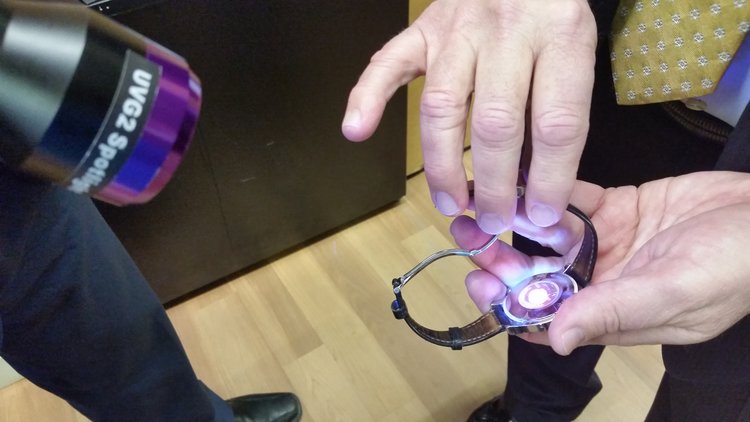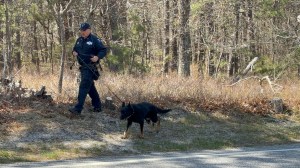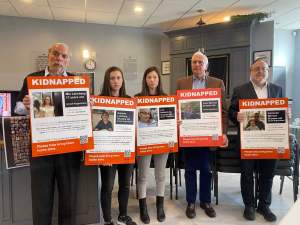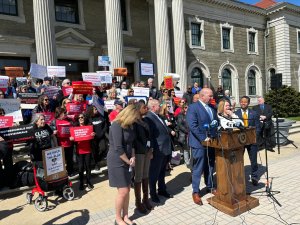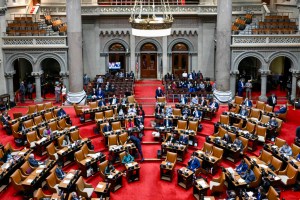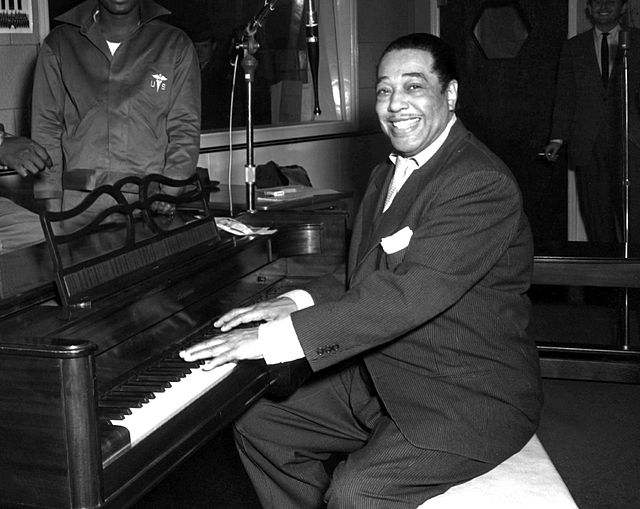Suffolk County officials are hoping a pilot program using 21st century DNA technology developed by a Stony Brook-based biotechnology firm will make it easier to reconnect burglary victims with their stolen products—but the program first has to pass the county legislature.
If implemented, Huntington Station residents would get first dibs but the greater Huntington Town area could also get in on the action. Suffolk County police and the firm that develops the technology, Applied DNA Sciences, will determine which residents get the “DNAnet” kits.
“DNA is the gold standard,” Legis. William Spencer (D-Centerport), who will be sponsoring legislation for the pilot program, said Friday at a press conference in Huntington Station. He called the DNA markers a “cutting-edge resource” that can make communities safer.
The DNA technology involves a dime-sized mark placed on an item, such as a laptop or jewelry. Each swab contains unique DNA markers that authorities could use to identify a potential stolen item. Applied DNA Sciences takes tags from plants and flower to create the DNA. After a product is marked with a DNA swab, the user will then have to register the product on the firm’s website. In theory, if a product marked with the technology is stolen and eventually located by authorities, they can use the DNAnet mark, which looks like a bright red ultraviolet signal, and match it to its owner.
Suffolk County Executive Steve Bellone, a Democrat, threw his support behind the proposal. Suffolk County District Attorney Thomas Spota, who did not attend the press conference, has also given his blessing.
Applied DNA Sciences’ Chairman, President & CEO James A. Hayward credited Long Island for being a world leader in DNA science and said his firm has added incentive to assist the community because its employees work on the Island.
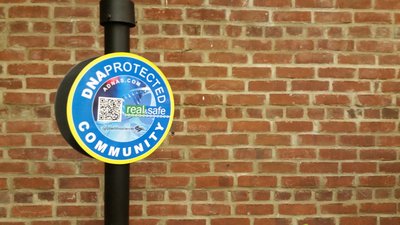
Five hundred kits will be made available to Huntington Station residents, free of charge, officials said. But it’ll be up to Suffolk police, working with the Applied DNA Sciences, to determine the best locations for the kits, which can mark up to 100 items. Spencer suggested that the kits won’t be clustered in one area but instead would be spread around the community.
Aside from obtaining the kits, homeowners would also get stickers and signs, similar to what alarm companies offer customers, with language stating that the property owner is utilizing the technology. Various streets would also be marked as a “DNA protected community.” Officials suggested the signage may deter would-be burglars thinking about breaking into a residence.
Hayward said the DNA marks do not contain GPS components, meaning the firm can’t track products tabbed with the technology.
While the pilot program would be a first for the Island, it has already been implemented in European cities like London and Stockholm.
Hayward noted that the technology cold also be used commercially, at banks and even utility companies housing copper—a much-desired metal that attracts thieves.
If the pilot program is approved by the legislature, it will be evaluated by Suffolk police six months after its implementation. If necessary, the department will then be able to make recommendations to improve how its used.
Spencer is hoping the legislature will vote on his bill soon, so officials can start getting the product out by the summer. He did not say how much the private-partner partnership would cost taxpayers.



